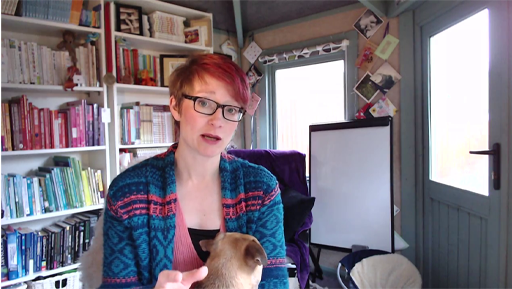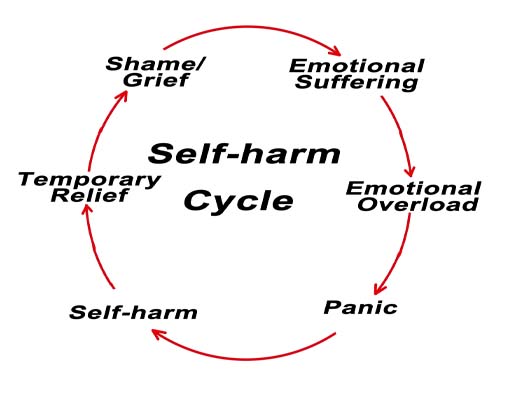5.1 Breaking the self-harm cycle
Self-harm is an expression of emotional distress, or of relief of unbearable tension and a sign that something is seriously wrong – it can also be an attempt to communicate internal distress and a need for help. For these reasons, and because of the physical damage people may inflict on themselves, witnessing self-harm in someone you care for or about can be distressing. It can also be puzzling, trying to understand what drives a person to hurt themselves in these ways. If, however, a young person is brave enough to seek help in relation to these behaviours, this should be considered an act that has taken courage and needs a sensitive response.
There are no clear-cut explanations about why people begin to self-harm. Reasons that have been put forward include a reaction to specific difficult or unpleasant experiences, and a way of dealing with something that is happening now or that happened in the past. Other common reasons suggested are:
- bullying
- difficulty at school
- sexual, physical or emotional abuse
- failure of relationships (Smith, 2013, p. 5).
Given the highly individual nature of this type of act, it is important not to make too many assumptions. The next activity will help you to consider these issues further.
Activity 7: Understanding the self-harm cycle
Watch the video ‘Understanding and breaking the self-harm cycle’ presented by Child and adolescent mental health expert Pooky Knightsmith.

Transcript: Video 3: ‘Understanding and breaking the self-harm cycle’ presented by Child and adolescent mental health expert Pooky Knightsmith.
If you know someone who is self-harming, make a note of one or two things you might be able to do to begin breaking the cycle.
Discussion
Understanding how a young person can get stuck in the self-harm cycle is a good starting point. Act as early as possible, remembering that talking about the problem is a good thing. Also, exploring ‘healthy’ coping strategies as alternatives to self-harm may be helpful. You may have picked up early in the video that telling someone to stop can be unproductive in the absence of effective coping strategies to replace the self-harm. It is also important to reassure a young person that they can step out of this cycle of self-harm and even though they may revert to these behaviours during difficult times, with help and support they can find healthy coping strategies.
If you are interested in more detail about how to help, see the further reading section [Tip: hold Ctrl and click a link to open it in a new tab. (Hide tip)] .
Sadly, young people who self-harm are more likely than average to contemplate suicide. The next section will deal briefly with this difficult topic.

